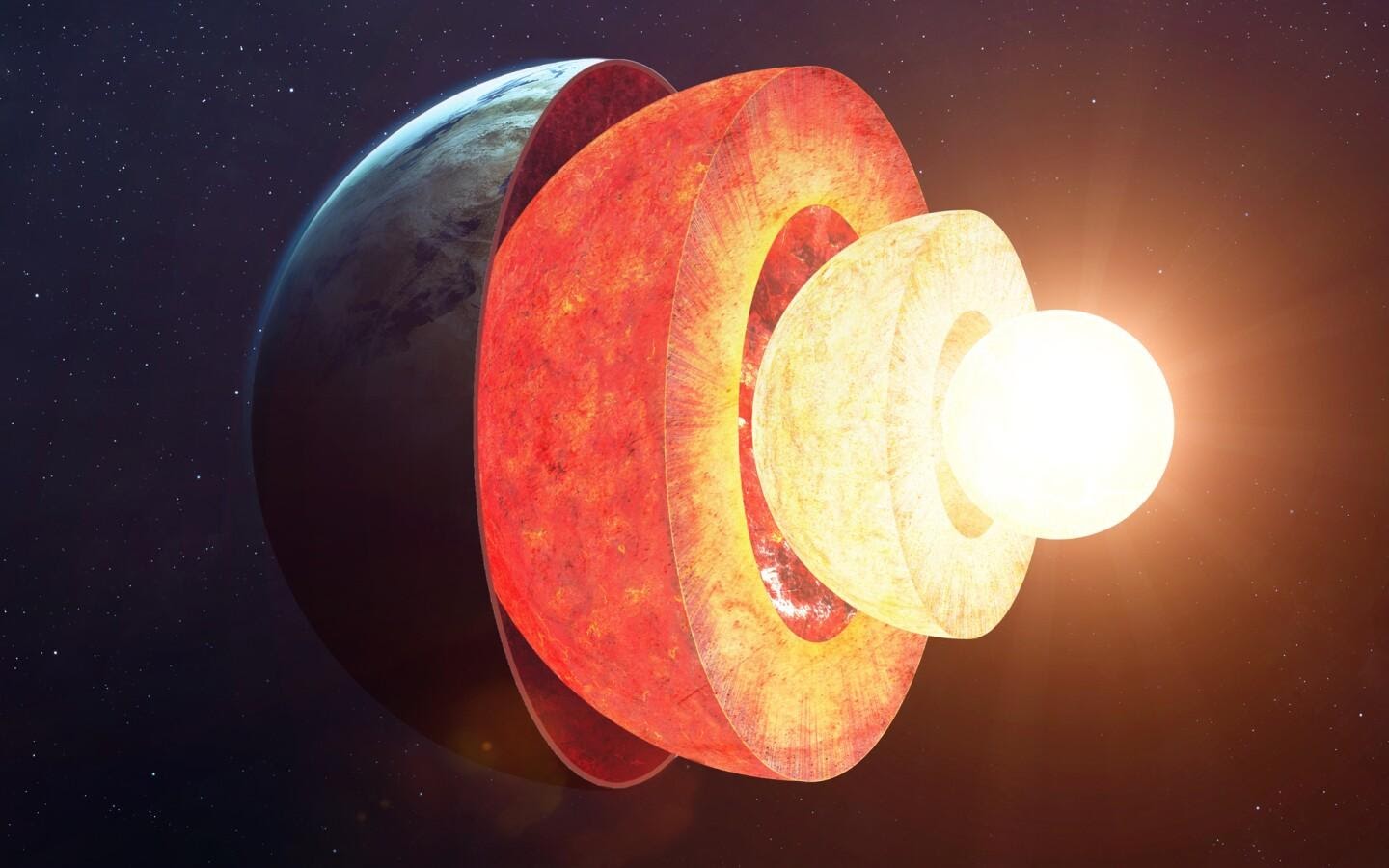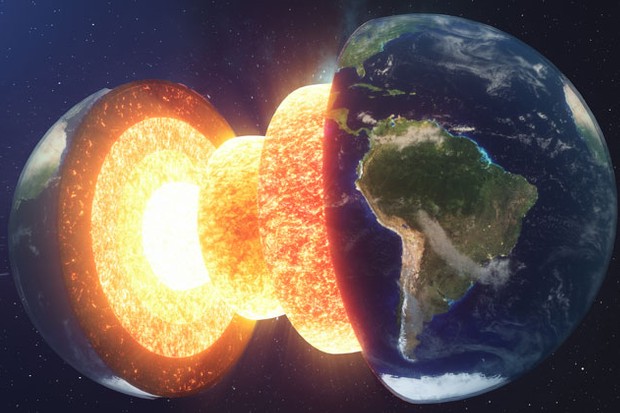
A study conducted by renowned scientists has found out that the Earth’s inner core is neither solid nor liquid but in a quite weird ‘superionic’ state.
Extreme temperatures and pressures in the Earth’s core were once supposed to build up into a solid inner core made primarily of iron. This core is responsible for the planet’s magnetic field, which protects humans from solar radiation. But in a study that contradicts past findings, researchers at the Institute of Geochemistry at the Chinese Academy of Sciences (IGCAS) have claimed that the inner core of earth consists of hydrogen, oxygen, and carbon which create a “superionic state”. The superionic state is different from solid or liquid forms. These studies were conducted by observing the seismic waves generated by earthquakes.
The inner core has remained a mystery for us because of its extreme depths to which humans cannot reach physically. Initial studies in the 1930s led scientists to believe that the inner core could be solid but that theory was soon replaced as later findings indicated that it was crystalline iron.
We know the inner core is soft and has a low shear-wave velocity from seismic wave data, therefore it can’t be solid iron or an iron alloy. Some scientists believe there could be a second inner core, while others believe there could be some light elements as an alloy due to the lower density than pure iron alone.
The study conducted by IGCAS and led by scientist Yu He reveals that the core’s solid state is actually a superionic state. The team of researchers said that “hydrogen, oxygen, and carbon in a hexagonal close-packed iron transform to a superionic state under the inner core conditions, showing high diffusion coefficients like a liquid”. This suggests that the inner core is in the superionic state rather than solid.
Superionic is a distinct state from solid, liquid, and gas with certain differences from the other states of matter. In the recent lab made superionic water, extremely high temperatures, and pressures break apart each water molecule resulting in the oxygen ions becoming a solid while the hydrogen ions float around like a liquid. The scientists ran computer models to see how seismic waves would travel through different combinations of elements in the Earth’s hot inner core and determined that iron alloys with carbon, hydrogen, and oxygen may work in the same way as superionic water.
In the crystalline lattice structure, the iron atoms were ‘solid,’ whilst the carbon, hydrogen, and oxygen molecules would diffuse through the media, resulting in a liquid-like element. This was termed abnormal by Yu He who also said that the solidification of iron at the inner core boundary does not change the mobility of these light elements, and the convection of light elements is continuous in the inner core.”
This research will almost certainly not be the last word on this issue. Although the paper’s findings give a good model about this softer and less dense pure iron the reason behind the seeming unevenness of the inner core remains to be found.












